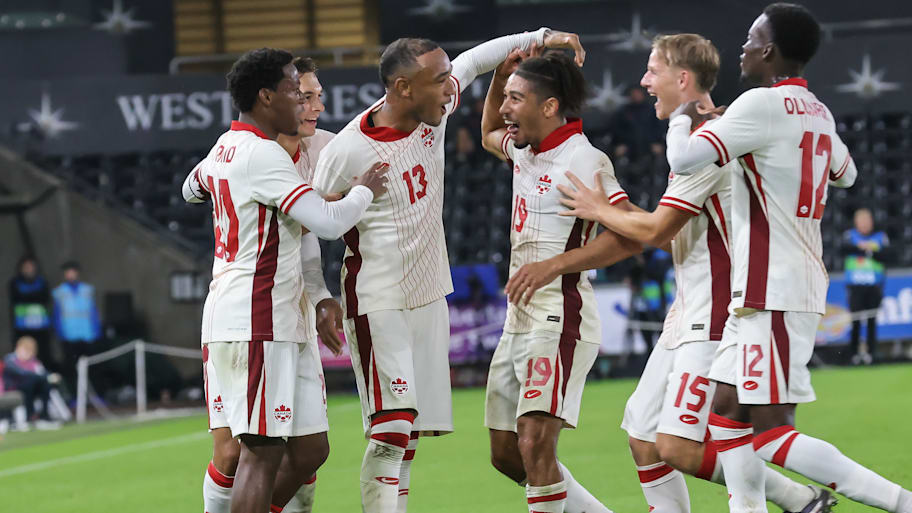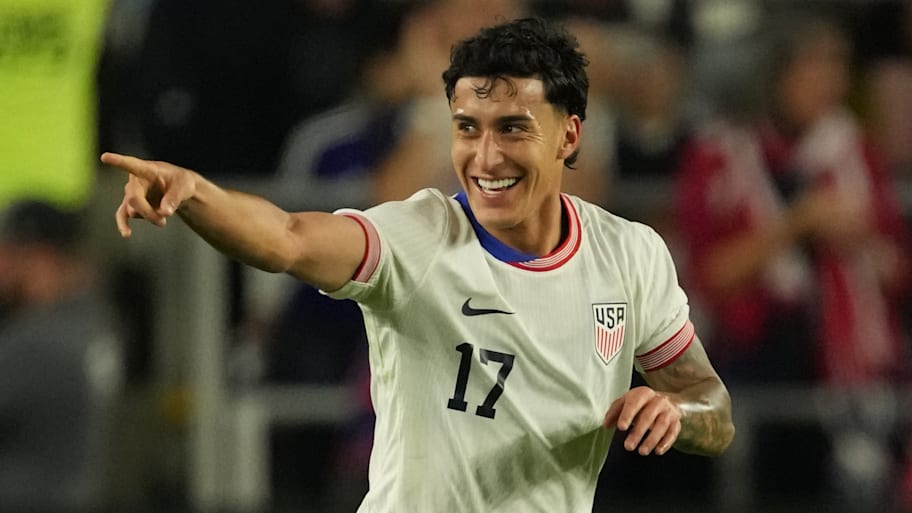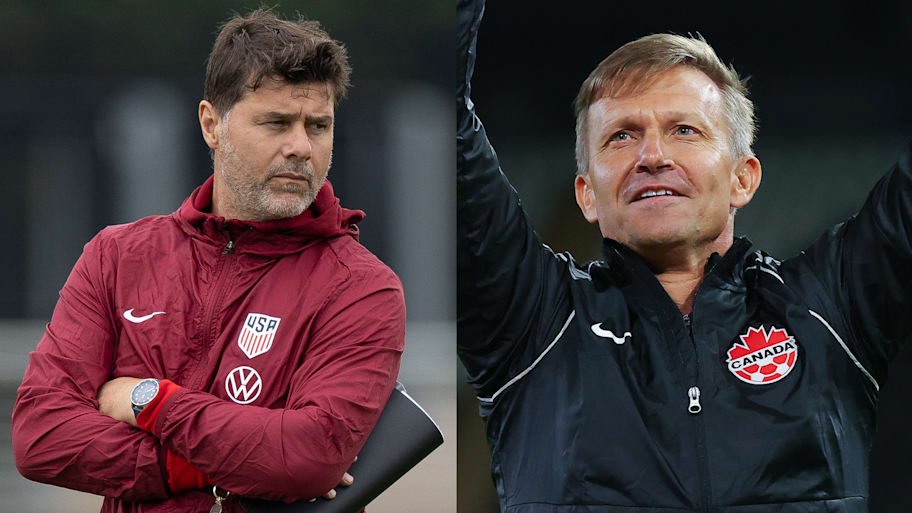The 2026 FIFA World Cup is just nine months away, and time is ticking for Mauricio Pochettino and Jesse Marsch to get everything ironed out.
Although the goal remains the same for both the United States and Canada—be ready to go for June 2026 on home soil—the process has been different, and both look to Mexico’s two trophies in 2025 with an ounce of jealousy.
The plans, and the battle between them, are elevated with an American, Marsch, coaching the Canadian side, and the U.S. having the expectations of a so-called “Golden Generation,” and a marquee head coach in Pochettino.
After just over a year in their jobs, Marsch sits at a 12-7-3 record and has hoisted Canada to a record-high FIFA ranking, while Pochettino has a 10-6-1 record and has lost six of eight games against top 30 opposition.
Canada seem to be following a solid plan after back-to-back wins against European opposition in Europe for the first time in history, beating Romania 3-0 and Wales 1-0. The USMNT, meanwhile, continue to spin, with a dispiriting 2–0 loss to South Korea followed up by a 2–0 win over Japan with a vastly improved performance.
But, how do the two stack up, and will both be at their best for 2026?
Rosters Tell a Story

“The most important is the process. The most important is say today win or lose, you know, it’s about the process,” Pochettino said after beating Japan. “It’s about the players really believing what we are doing, that they respect us, how we respect them.”
For the USMNT, the emphasis has been on experimentation and hasn’t changed as the World Cup approaches. Meanwhile, Canada’s path has been methodical, with a nearly clear roster, as Marsch stated that the team is looking at the final three windows of 2025 as a singular focus.
“Our group has, in terms of selection for the overall pool, become clearer and clearer and stabilized,” Marsch said after naming his roster, with few differences from the Gold Cup squad, and no key players missing outside of those injured and Cyle Larin, who left to attend the birth of his child.
“That’s not to say that there aren’t spots up for competition, but I think that in a lot of positions, when we know our players are healthy, we’re pretty clear on what each guy can deliver and how he fits in. And I think that will be important in developing ourselves toward next summer.”
🇺🇦 Ukraine ✅
— OneSoccer (@onesoccer) September 9, 2025
🇷🇴 Romania ✅
🏴 Wales ✅
For the first time EVER, the CanMNT 🇨🇦 have beaten their last 3 European opponents back-to-back-to-back 😎 pic.twitter.com/PoxO0e7k0o
At the same time, Pochettino has embraced each game as an individual opportunity and introduced new players to the squad. He also left core players, such as Juventus’ Weston McKennie and Bayer Leverkusen’s Malik Tillman, among others, at home.
"No one has their place [assured], and that is my message for everyone that you need to fight, need to fight because that is an open system,” Pochettino said of his roster. "If we want to be a team [that’s] really competitive, we cannot nominate 13, 14, 15 players... these guys for sure are going to arrive at the World Cup and the rest, they need few places to fight.”
Competition for Places

Through the window, Marsch took further steps as well, making just two changes between Canada’s two matches, and stating that rotating for the sake of rotation has ended. Pochettino, though, continued to make significant changes.
“We are going to be leaning more toward players having to earn minutes from here on in, that it’s the national team, and that’s the way it should be,” Marsch said. “We’ve developed a lot of players within the system and given a lot of players experiences.
“We’re moving things forward in a really good way. And I think the responsibility that each player understands that he has to carry for himself and for the team is at an extremely high level.”
Meanwhile, Pochettino suggested that fringe players who impressed could be in contention for the World Cup, specifically mentioning Club América forward Alejandro Zendejas, who made his first appearance under the head coach during the camp.
Arfsten to Zendejas.
— U.S. Soccer Men's National Team (@USMNT) September 10, 2025
A to Z. pic.twitter.com/uO8W4rQqVU
“He’s in the race for the roster for the World Cup,” Pochettino said about Zendejas, further explaining that nobody has a solidified spot on the roster. “We are aiming to win at the World Cup...I cannot just rely on my experienced players... I need my young players to step up and gain experience, and heighten the standard.”
At the same time, the places players are competing for are unclear on the USMNT side, as they switched to a 3-5-2 against Japan, the first tactical shift under Pochettino, a striking contrast to Canada’s settled 4-2-2-2 formation.
“I think it’s good to have different plans,” Pochettino said. “[Different] approaches to the games, different formations.”
Best Lineups in Question
Starters in Columbus.#USMNT x Allstate pic.twitter.com/kXZpvNwz5P
— U.S. Soccer Men's National Team (@USMNT) September 9, 2025
All those issues, of course, lead to the further question of what a starting lineup for either team could look like, let alone a full World Cup roster.
“I’m a little confused, because it seems like the experimental phase is still going on, in my opinion,” USMNT legend Landon Donovan said on the Unfiltered Podcast with former USMNT goalkeeper Tim Howard. “In fairness to Pochettino, there are lots of injuries, there's lots of things going on that prevent him from calling certain guys, but some of these, they’re a little bit head-scratching, to be honest."
The head-scratching may ring truer than ever coming out of the window as well. Now, the USMNT have a new formation that worked for a win, and played it without key players, as the evolution led to a foggier future, albeit potentially a prettier one.
For Canada, though, things became clearer. The core is settled, and the locks across the lineup are starting to show, allowing them to gain chemistry through the next four matches to round out 2025.
GOLAZO 🇨🇦
— OneSoccer (@onesoccer) September 9, 2025
DEREK CORNELIUS NAH BRO
WHAT. A. FREE. KICK. 🤯#CanMNT up 1-0 on Wales 🏴 pic.twitter.com/QUIl5CXymb
While the differences may be striking, the time isn’t slowing down for either, and there’s little evidence as to what path may be the right one. That, of course, will be answered in June, as they kick off in Toronto and Los Angeles, with hopes of playing as close to July 12’s final as possible.
Until then, the road continues as the USMNT will look to October friendlies against Ecuador and Australia, while the Canadians face Australia and Colombia.
“If you go to the past, when things happen like this, the teams were very successful,” Pochettino said of the team’s form and beating Japan after the South Korea loss. “That is why I am so relaxed, you know, stick with the plan and keep going.”
READ THE LATEST SOCCER NEWS, TRANSFER RUMORS AND MATCH REACTION
This article was originally published on www.si.com as ‘The Process’: USMNT, Canada in Stark Contrast As 2026 World Cup Edges Closer.
